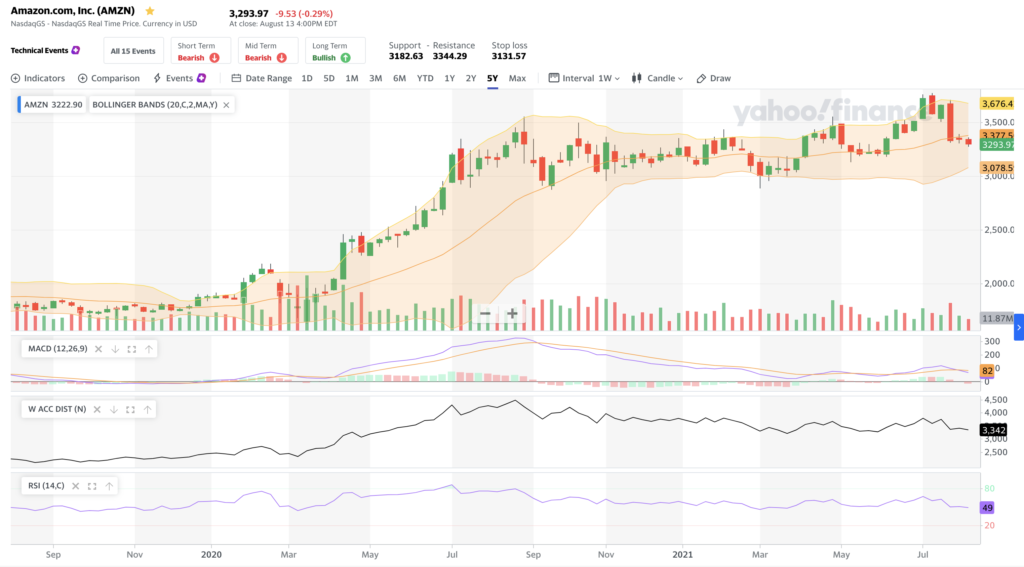Download Over 60 Technical Analysis Indicators.
Overview: DIH provides end-of-day technical analysis indicators including RSI, MACD, Sharpe ratio, R squared — over 60 in total — for global equities. We include relevant security reference data and closing prices as well.
Coverage: Our technical analysis indicators cover stocks, ETFs, and other equities across over 115 countries and over 150 exchanges.
History: We have indicators going as far back as 2007.
Updates: We update our indicators daily.
Delivery: You can receive our indicators in bulk files via download, S3 to S3, or on-demand via API.
License Terms: We license our data for either your internal use only or for display/redistribution to your clients. Unlike other data providers, DIH does not have purge clauses – so if you ever stop receiving data from us, you do not have to a ransom to keep the data you’ve already received and for which you’ve paid.
Pricing: Several inputs go into the pricing for our data. For example, do you want technical analysis indicators for all available countries/markets or a subset? How much history do you want? Do you want updates going forward? Contact us to learn more.
Why Firms Choose Our Technical Analysis Indicators.
Technical analysis depends on accurate price and volume data. Institutional market participants use technical analysis to generate trading signals, mitigate risks within their portfolios, and evaluate a security’s strength or weakness relative to the broader market or one of its sectors.
Given how much capital these firms and their clients have at risk in the market, it is crucial that the technical analysis indicators that go into their models and analysis be accurate. Since technical analysis models are calculated, their accuracy is only as good as the model used to compute them, and the price and reference data that goes into the model.
Institutional market participants choose to source their technical analysis indicators from DIH for several reasons:
Proven Models – The models used to calculate our technical analysis indicators have been thoroughly tested and vetted.
Exchange-Sourced Raw Data – All of our indicators are calculated using raw price data from the exchange. Our security reference data and corporate actions portions are sourced from the exchange and/or issuer.
Variety of Metrics – We offer over 60 indicators including RSI, MACD, Sharpe ratio, R squared, and more.
Geographic Coverage – We offer indicators for stocks, ETFs, and other equities across over 115 countries and over 150 exchanges.
Complete & Accurate Data – To ensure the highest quality data possible, all of the closing prices, security reference data, and corporate actions that feed into our indicators are checked both algorithmically and manually reviewed.
Flexible Licensing Terms – DIH licenses its data for internal use or for display/redistribution to your end-users. We also do NOT have any purge clauses like many data providers. So if you ever cancel your subscription, you do not need to delete the data you’ve already downloaded.
Affordable Pricing – Despite the high quality of our indicators, we still try very hard to work within our clients’ budgets.

What’s Included in Our Technical Analysis Indicators.
DIH provides over 60 end-of-day technical analysis indicators for global equities, including:
- RSI
- MACD
- Alpha
- Beta
- Sharpe ratio
- R squared
- Average Daily Traded Volume
- Volatility
- Value at Risk
- Benchmark Securities
- Returns for Benchmarks, Stocks & Comparative Securities
- Dividend Growth
- Issuer Market Capitalization
We can also add additional metrics or customize our existing ones upon request.
In addition to the indicators, we also provide the relevant security reference data, including:
- Ticker Symbol
- Issuer Name
- Security Type
- ISIN
- Exchange
- Currency
We also include closing prices information (e.g. Last Trade Date, High, Low, and Close) with our indicators.
When a benchmark security is used in one of our indicators the primary local index is used unless a local index is not available. In those cases, we use the S&P 500 index as the benchmark security.
Returns are based on adjusted data and therefore include effects from all such events as:
- Dividends
- Subdivisions
- Consolidations
- Rights
- Bonus
- Offers
- Capital Calls
- Capital Returns
The calculation used to generate the returns is simply the natural log of the price change ratio.
Where there is insufficient data for a particular metric (e.g. a new listing and the analytic requires 60 months), the metric will be left blank or set to NAN (not a number).

Who Can Benefit from DIH’s Technical Analysis Indicators?
Technical analysis indicators are very useful to anyone who subscribes to technical analysis as a means to evaluate the market, no matter what the asset class. Firms that subscribe to our metrics include:
- Investment banks
- Brokerage firms
- Hedge funds (systematic & non-systematic)
- Asset managers
- Proprietary trading firms
- Service providers (e.g. OMS, EMS, data vendors, etc.)
How DIH Clients Use Our Data.
Institutional market participants use our indicators for various tasks, including:
- Manage risks associated with securities in their portfolios
- Gain insights into the overall global equity market
- Develop and back-test technical trading strategies
Many find it more convenient and less expensive to receive our indicators instead of generating such metrics themselves in-house.
No matter what the use case, having accurate technical analysis indicators is important.
Flexible Updates & Delivery.
Our technical analysis indicators are updated on a daily basis.
You may customize our metrics to best suit your needs. For example, specify the instruments, exchanges, or countries for which you’d like to receive indicators. Also, choose how much historical data you’d like, and whether you wish to subscribe for updates going forward.
We offer several ways to access our technical analysis indicators:
Bulk File Download – For most of our clients, downloading our technical analysis indicators in bulk files is most convenient. We can deliver files in various formats (e.g. CSV) via download, S3 to S3 transfer, etc.
API – Some use cases are better suited for on-demand delivery of technical analysis indicators via an API.
 Technical analysis indicators include RSI, MACD, Sharpe ratio, R squared, and more.
Technical analysis indicators include RSI, MACD, Sharpe ratio, R squared, and more.